Rediscovering the slow cooker in COVID times.
The irresistible appeal of a slow cooker is its convenience and simplicity. Turn it on, and it cooks dinner while you do other things. You have no pot to watch. It doesn’t burn or spill over. Just set it and let it do its work. Next thing you know, your kitchen smells heavenly, and you feel like your personal chef did all the work. One profound effect of the current pandemic stay-at-home culture is that we are doing more home cooking. In and of itself, this can be a good thing. However, it has also given rise to stress eating and weight gain. Remember the “Freshman 15,” the weight-gain trend on college campuses? The pandemic gives us a new trend being called “The COVID 19.” Two ways to counter unwanted weight gain are to stop eating junk food, and keeping lots of healthy foods on hand, especially plant-based whole food meals made with beans, whole grains, and vegetables.

The growing interest in slow cooking has come at a time when more and more people are focused generally on better health and healthy eating, and specifically on the benefits of a plant-based diet. When you factor in a widening awareness of world cuisine, we may well be looking at a game-changing culinary moment. This confluence of trends encouraged me to revisit a book I wrote nine years ago, Fresh from the Vegan Slow Cooker. In 2020, I authored a new book that features more than 225 recipes using only plant-based ingredients—with chapters on everything from breakfast to main courses, appetizers to desserts, and condiments and beverages. These are some of my favorites…
Root Vegetable Bisque with Herbs de Provence
6 to 8 hours
Traditional bisques are often thickened with rice, so I’ve added some to this recipe. The soup is puréed after cooking and then returned to the pot to serve. If you prefer a chunky rather than creamy soup, you can omit the puréeing step. Just don’t call it a bisque!
1 medium-size yellow onion, chopped
3 garlic cloves, chopped
2 carrots, coarsely chopped
2 medium-size parsnips, peeled and coarsely
chopped
1 small turnip, peeled and diced
1 medium-size Yukon Gold potato, peeled
and diced
1/3 cup (63 g) raw brown rice
1 (14-ounce, or 395 g) can diced tomatoes, drained 4 cups (960 ml) vegetable broth
2 teaspoons dried herbes de Provence
Salt and freshly ground black pepper
2 tablespoons (8 g) chopped fresh flat-leaf parsley,
for garnish
 1. Combine the onion and garlic in the slow cooker. Add the carrots, parsnips, turnip, potato, and rice. Stir in the tomatoes, broth, herbes de Provence, and salt and pepper to taste. Cover and cook on Low until the vegetables are tender, 6 to 8 hours.
1. Combine the onion and garlic in the slow cooker. Add the carrots, parsnips, turnip, potato, and rice. Stir in the tomatoes, broth, herbes de Provence, and salt and pepper to taste. Cover and cook on Low until the vegetables are tender, 6 to 8 hours.
2. Use an immersion blender to puree the soup right in the pot or transfer the soup, in batches, to a high-powered blender or food processor and puree until smooth, then return to the pot. Taste and adjust the seasonings, if needed. Serve hot, sprinkled with the parsley.
 Holy Mole Red Bean Chili
Holy Mole Red Bean Chili
6 to 8 hours
The rich depth of flavor from the mole sauce elevates a humble chili to new heights. I especially like the addition of chopped seitan in this chili, but you may substitute Soy Curls, tempeh, or jackfruit, if you prefer.
1 large yellow onion, chopped
4 garlic cloves, minced
1/2 small green bell pepper, seeded and chopped 3 tablespoons (48 g) tomato paste
2 tablespoons (10 g) unsweetened cocoa powder 2 tablespoons (32 g) almond butter
2 to 3 tablespoons (15 to 22.5 g) chili powder
1 tablespoon (17 g) minced chipotle chiles in adobo 1/2 teaspoon ground cinnamon
1 (14.5-ounce, or 410 g) can diced fire-roasted
tomatoes, drained and juices reserved
1 (14-ounce, or 395 g) can crushed tomatoes 3 cups (768 g) cooked dark red kidney beans
or 2 (15-ounce, or 425 g) cans beans, rinsed and drained
8 ounces (225 g) seitan, chopped
2 cups (480 ml) water
1 teaspoon salt
1/4 teaspoon freshly ground black pepper
Diced avocado, pepitas (green pumpkin seeds)
chopped scallions, and/or chopped fresh cilantro, for garnish
1. In the slow cooker combine the onion, garlic, and bell pepper. Stir in the tomato paste, cocoa, almond butter, chili powder, chipotles, cinnamon, and the juices from the diced tomatoes, stirring to blend.
2. Stir in the diced tomatoes, crushed tomatoes, beans, seitan, water, salt, and pepper. Cover and cook on Low for 6 to 8 hours.
3. Taste and adjust the seasonings, if needed. Serve hot, garnished with desired toppings.
A World of Beans
Because bean cooking was the intended use of the first slow cookers, it almost goes without saying that beans are a natural fit for the slow-cooking method. While many of us enjoy cooking a variety of different beans, it’s a safe bet that most of us have barely scratched the surface in terms of what types are available. Believe it or not, there are more than 13,000 different beans and legumes in the world. That’s a lot of beans!
Because beans take longer to cook than most vegetables, I prefer to use beans that I have already cooked in most of my recipes to avoid overcooking the vegetables. Another reason for using precooked beans in recipes is that it allows me to drain off the cooking liquid after cooking beans, making them more digestible. Cooking beans from the dried state in the slow cooker is both easy and economical. Here are some of the basics…
● A convenient way to prepare dried beans to use in recipes is to cook the beans in your slow cooker overnight on Low. They will be done by morning.
● A small piece of kombu sea vegetable added to the pot while the beans cook will help tenderize the beans while adding flavor and nutrients.
● Dried herbs should be added to beans during the final thirty minutes of cooking time. However, it is best to add fresh herbs after the beans are cooked for the best flavor.
● To keep cooked beans from drying out, cool them in their cooking liquid. For improved digestibility, be sure to drain the bean cooking liquid first before using the cooked beans in a recipe.
● Consider cooking a large amount of beans, portion them into airtight containers, and store them in the refrigerator for up to one week or in the freezer for up to six months.
Artichoke Risotto
2 hours
In order to achieve the right texture and flavor, this risotto requires a few minutes of skillet time before combining in the slow cooker. It’s not a bad trade-off when compared to all of the hands-on stirring involved in making conventional risotto. Using nutritional yeast makes this soy-free, although you can substitute a soy-free vegan Parmesan instead.
1/4 cup (60 ml) water, or 2 teaspoons olive oil 1 small yellow onion or 2 shallots, minced
1/4 cup (60 ml) dry white wine
1 1/4 cups (237.5 g) Arborio rice
3 1/2 cups (840 ml) vegetable broth, plus more
if needed
2 teaspoons chopped fresh thyme leaves,
or 1 teaspoon dried thyme
1/2 teaspoon salt
2 cups (600 g) canned or frozen artichoke hearts,
thawed, chopped
2 tablespoons (7.5 g) nutritional yeast, or 1/4 cup
(33.5 g) Almond Parmesan
2 teaspoons fresh lemon juice
Freshly ground black pepper
1/4 cup (30 g) chopped toasted walnuts, for
garnish
2 tablespoons (6 g) snipped fresh chives, for garnish;
1. Heat the water or oil in a medium-size skillet over medium-high heat. Add the onion and sauté until softened, about 5 minutes. Stir in the wine and cook for 30 seconds, then add the rice and cook, stirring, for 2 minutes.
2. Transfer the rice mixture to the slow cooker. Add the broth, thyme, and salt, cover, and cook on High until all of the liquid is absorbed and the rice is just tender, about 2 hours.
3. Stir in the artichokes, nutritional yeast, lemon juice, and pepper to taste. Taste and adjust the seasonings, if needed. If the mixture is too dry, stir in a little more hot broth as needed.
4. Serve hot, spooned into shallow bowls. Sprinkle each serving with the toasted walnuts and chives.
Why Slow-Cook?
• It’s a convenient way to prepare healthy home-cooked meals.
• It allows you to cook and serve in the same vessel, so it saves on cleanup time.
• It can have dinner ready and waiting for you at the end of the day.
• The slow, gentle cooking adds depth of flavor to foods.
• It keeps the kitchen cool on hot days.
• It’s an ideal way to cook beans and seitan from scratch.
• It doubles as a chafing dish or hot punch bowl at parties.
• It’s economical because it uses less energy than oven cooking and makes great leftovers.
• It can be used as a mini-oven to slow-bake cakes, casseroles, potatoes, and more
• It frees up stovetop burners when cooking for parties or for a crowd on holidays.
 Rustic Potpie Topped with Chive Biscuits
Rustic Potpie Topped with Chive Biscuits
5 to 7 hours
This rustic potpie features a top crust of tender drop biscuits that cook right in the slow cooker. The steam heat produces a soft and tender biscuit topping. If you prefer a drier texture to the biscuits, let the cooked potpie sit uncovered for about 10 minutes before serving. To make this gluten-free, use diced tempeh or extra-firm tofu instead of seitan and use a gluten-free flour blend. For soy-free, omit the soy sauce and use Soy-Free Sauce, or coconut aminos, or add some soy-free vegetable broth base or additional salt, and a soy-free plant milk.
2 tablespoons (30 ml) plus 2 teaspoons olive oil 1 medium-size yellow onion, minced
2 large carrots, peeled and minced
2 tablespoons (32 g) tomato paste
1 teaspoon dried thyme
1/2 teaspoon dried marjoram
1 cup (124 g) plus 3 tablespoons (23.25 g)
all-purpose flour
3 tablespoons (45 ml) dry red wine
1 tablespoon (15 ml) soy sauce
1 cup (240 ml) vegetable broth
2 medium-size Yukon Gold potatoes, peeled and
cut into 1/2-inch (1 cm) dice
8 ounces (225 g) cremini mushrooms, coarsely
chopped
8 ounces (225 g) seitan, cut into 1/2-inch (1 cm) dice Salt and freshly ground black pepper
3/4 cup (97.5 g) frozen green peas, thawed
11/2 teaspoons baking powder
1 tablespoon (0.2 g) dried or (3 g) snipped fresh chives 1/2 cup (120 ml) plain unsweetened plant milk

1. Heat 2 teaspoons of oil in a large skillet over medium-high heat. Add the onion and carrots and sauté for 5 minutes. Stir in the tomato paste, thyme, and marjoram and cook for 1 minute longer. Sprinkle on 3 tablespoons (23.25 g) of flour and cook for 30 seconds. Add the wine, soy sauce, and broth, stirring after each addition.
2. Transfer the onion mixture to the slow cooker. Add the potatoes, mushrooms, seitan, 1/2 teaspoon of salt, and 1/4 teaspoon of pepper. Cover and cook on Low until the vegetables are tender, 4 to 6 hours. Taste and adjust the seasonings, if needed, then stir in the green peas.
3. In a large bowl, combine the remaining 1 cup (124 g) of flour, the baking powder, chives, and 1/2 teaspoon salt. Quickly stir in the plant milk and the remaining 2 tablespoons (30 ml) of oil until just blended. Drop the biscuit mixture by large spoonfuls onto the surface of the simmering stew. Turn the heat setting to High, cover, and cook until the dough is cooked through, about 1 hour longer.
4. Serve within 15 minutes after the biscuit dough has finished cooking.
Variations: Instead of the seitan, use cooked chickpeas or chopped tempeh. You could also use sweet potatoes instead of the white potatoes, or add turnips in addition to the carrots, and so on. Different herbs could be used in the biscuits—instead of chives, try dill and a little dried savory, if you have some.
Happy Half-Century
The Rival Crock-Pot turns 50 this year. In 1971, Rival bought the “original” consumer electric slow cooker, the Naxon Beanery, which was originally developed for bean cooking. The Crock-Pot was marketed to working women as a way to make a home-cooked meal while they were at work, and they quickly put it to use in preparing pot roasts and other meat-centric dishes. A phenomenal hit at the time, the Crock-Pot fad faded, only to enjoy a resurgence some 30 years later. Since the early ’70s, more than 80 million slow cookers have been sold.
 Coconut Rice Pudding
Coconut Rice Pudding
with Mango
1 1/2 to 2 hours
A favorite dessert in Thai restaurants, rice pudding with fresh mango is easy to make at home in your slow cooker. If you prefer a sweeter pudding, add up to 1/4 cup (50 g) extra sugar.
1 1/2 cups (300 g) raw jasmine rice
1/2 cup (100 g) granulated natural sugar,
or more to taste
1/4 teaspoon salt
2 (14-ounce, or 395 g) cans unsweetened
coconut milk
1/2 cup (120 ml) unsweetened plant milk, plus
more if needed
1 teaspoon coconut extract
1 teaspoon pure vanilla extract
1 large ripe mango, peeled, pitted, and chopped
1. Lightly coat the slow cooker insert with vegan butter or nonstick cooking spray. Combine the rice, sugar, and salt in the cooker. In a saucepan or the microwave, heat the coconut milk and plant milk just to boiling. Slowly add the heated milks to the slow cooker, stirring to dissolve the sugar. Cover and cook on High until the rice is tender, about 1 1/2 hours.
2. Turn off the slow cooker and stir in the coconut and vanilla extracts. Allow to cool, uncovered, for 10 minutes, then stir in the mango. To help thicken the pudding, stir it gently to let it absorb any remaining liquid; it will continue to thicken as it cools. If the pudding is too thick, stir in a little more plant milk until it’s the consistency you like. The pudding can be served warm, at room temperature, or chilled. To serve chilled, spoon the pudding into dessert glasses, cover, and refrigerate until cold.

A slow cooker is an easy way to prepare nourishing and comforting dishes such as chili, casseroles, stews, and hearty soups made with beans, grains, and vegetables. Preparing food in a slow cooker retains all the nutrients and condenses the delicious flavors. And because slow-cooked dishes can be made without oil, they are low in fat and contain no cholesterol, making them ideal for these challenging times when we may be prone to eating more. EDGE
Editor’s Note:
Robin Robertson is a veteran restaurant chef, cooking teacher and columnist. She has authored numerous cookbooks, including The Plant-Based Slow Cooker ($27.99 Harvard Common Press) and best-sellers Fresh from the Vegan Slow Cooker, Vegan Planet, Vegan on the Cheap, and Quick-Fix Vegan. For more info visit her web site robinrobertson.com.


 Inlet Meltdown, 2006 Acrylics on board, 24” x 30” Private Collector
Inlet Meltdown, 2006 Acrylics on board, 24” x 30” Private Collector
 Nature’s Pride, 2011
Nature’s Pride, 2011 Back Bay Whimsy, 2013
Back Bay Whimsy, 2013 Storm Brewing on the Barnegat, 2017 Encaustic on metal, 11” x 14”
Storm Brewing on the Barnegat, 2017 Encaustic on metal, 11” x 14” Shore Energy, 2019
Shore Energy, 2019 All you need is an eye for fun and an ageless spirit to appreciate the work of internationally known artist Vincent Nardone of Brick Township, who describes himself as a Visionary Expressionist. His art reflects the rhythms and patterns of New Jersey back bays and coastlines. Says Nardone, “My creative process is a textural journey synthesized into bits and then abstracted into imagery using pastels, watercolor, mixed media, and acrylic impasto. I like to work on location with my palette knife, brushes, and ideas.” Many of his works seem to dance like sugarplum fairies along the waterways he often describes as “whimsy.” A South Orange native, Nardone recalls, “My mother wanted me to be a priest, but I wanted to be an artist and go out with girls.” He studied at the Newark School of Fine and Industrial Arts, Montclair State University, USC, and did annual post-graduate work in Paris and Florence. He taught in the South Orange-Maplewood school system for 30 years. He also won major awards, including Le Salon, Paris; Prix Rubens Medal; gold medals from the Audubon Artists, and other major awards from Allied Artists of America. All “sugarplums,” too.
All you need is an eye for fun and an ageless spirit to appreciate the work of internationally known artist Vincent Nardone of Brick Township, who describes himself as a Visionary Expressionist. His art reflects the rhythms and patterns of New Jersey back bays and coastlines. Says Nardone, “My creative process is a textural journey synthesized into bits and then abstracted into imagery using pastels, watercolor, mixed media, and acrylic impasto. I like to work on location with my palette knife, brushes, and ideas.” Many of his works seem to dance like sugarplum fairies along the waterways he often describes as “whimsy.” A South Orange native, Nardone recalls, “My mother wanted me to be a priest, but I wanted to be an artist and go out with girls.” He studied at the Newark School of Fine and Industrial Arts, Montclair State University, USC, and did annual post-graduate work in Paris and Florence. He taught in the South Orange-Maplewood school system for 30 years. He also won major awards, including Le Salon, Paris; Prix Rubens Medal; gold medals from the Audubon Artists, and other major awards from Allied Artists of America. All “sugarplums,” too.

 Part of the shifting treatment landscape for Behavioral Health stems from what Dr. Salvatore Savatta, Chair of Psychiatry at Trinitas, calls a “dramatic expansion” over the last 15 years in relevant research and the volume of information sources from which practitioners can draw:
Part of the shifting treatment landscape for Behavioral Health stems from what Dr. Salvatore Savatta, Chair of Psychiatry at Trinitas, calls a “dramatic expansion” over the last 15 years in relevant research and the volume of information sources from which practitioners can draw: Esketamine is a more potent and faster-acting form of ketamine, which is most often used as a surgical anesthetic and has been around for 50 years. Esketamine has an immediate effect on treatment-resistant depression and also appears to reduce suicide ideation. Delivering the drug in a nasal spray means it is absorbed by a different receptor than pills are—providing a much faster route to the brain, where it targets multiple brain connections at once.
Esketamine is a more potent and faster-acting form of ketamine, which is most often used as a surgical anesthetic and has been around for 50 years. Esketamine has an immediate effect on treatment-resistant depression and also appears to reduce suicide ideation. Delivering the drug in a nasal spray means it is absorbed by a different receptor than pills are—providing a much faster route to the brain, where it targets multiple brain connections at once.

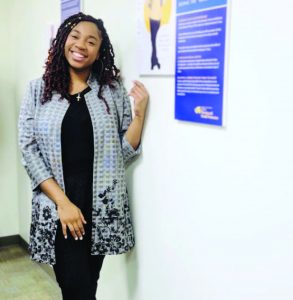 During her high school years at Union County Vo-Tech’s Allied Health School, Jones took part in a Medical Mentoring program and Nursing Camp at Trinitas, laying the foundation of skills and academics on which she built her professional plans. Her undergraduate studies at Drexel University—funded partly by a scholarship from Trinitas—propelled her ever forward and enhanced her passion for the business of healthcare.
During her high school years at Union County Vo-Tech’s Allied Health School, Jones took part in a Medical Mentoring program and Nursing Camp at Trinitas, laying the foundation of skills and academics on which she built her professional plans. Her undergraduate studies at Drexel University—funded partly by a scholarship from Trinitas—propelled her ever forward and enhanced her passion for the business of healthcare. 
 That experience planted another seed for Jasmine Jones: the possibility of one day putting her journalism skills to use by traveling the world, tracking her experiences in a memoir, and using her expertise to impact healthcare policy. At the moment, as one of Trinitas’s promising new Emergency Department RNs, she’ll remain close to home and family. Her own, as well as the Trinitas family…which she’s been a part of now going on ten years.
That experience planted another seed for Jasmine Jones: the possibility of one day putting her journalism skills to use by traveling the world, tracking her experiences in a memoir, and using her expertise to impact healthcare policy. At the moment, as one of Trinitas’s promising new Emergency Department RNs, she’ll remain close to home and family. Her own, as well as the Trinitas family…which she’s been a part of now going on ten years. 
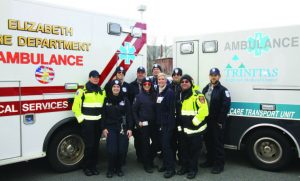 Administrative Director of the Emergency and Emergency Medical Services Departments, a good chunk of that critical window can be wasted by driving that individual to the hospital in a personal vehicle. Dialing 9-1-1 initiates a System of Care that makes the most of those precious minutes.
Administrative Director of the Emergency and Emergency Medical Services Departments, a good chunk of that critical window can be wasted by driving that individual to the hospital in a personal vehicle. Dialing 9-1-1 initiates a System of Care that makes the most of those precious minutes.
 at the very first moment that the EMTs make contact with the patient. Trinitas pre-hospital personnel is trained in procedures such as administering CPR, providing medication, inserting an IV, and transmitting an EKG to the hospital prior to the patient’s arrival. Once delivered to the Emergency Department, no time is wasted in turning over those in need of immediate cardiac care to the Cardiovascular Services Department.
at the very first moment that the EMTs make contact with the patient. Trinitas pre-hospital personnel is trained in procedures such as administering CPR, providing medication, inserting an IV, and transmitting an EKG to the hospital prior to the patient’s arrival. Once delivered to the Emergency Department, no time is wasted in turning over those in need of immediate cardiac care to the Cardiovascular Services Department.
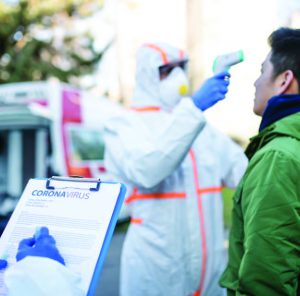 situations on a round-the-clock basis. In assembling that team, she looks for individuals who are “a bit of an adrenaline junkie,” adding that they need to stay calm under fire and also appreciate the ultimate rewards of being a critical caregiver. What is her reward?
situations on a round-the-clock basis. In assembling that team, she looks for individuals who are “a bit of an adrenaline junkie,” adding that they need to stay calm under fire and also appreciate the ultimate rewards of being a critical caregiver. What is her reward? —ST Elevation Myocardial Infarction, or STEMI—which blocks blood flow to the heart. These extreme cases are prime examples of the difference that a 9-1-1 call to Trinitas can make.
—ST Elevation Myocardial Infarction, or STEMI—which blocks blood flow to the heart. These extreme cases are prime examples of the difference that a 9-1-1 call to Trinitas can make.

 got it. I got an ache? Oh, I got it. My eye’s twitching? [laughs] It’s COVID! So then I had a friend tell me to download the Calm app and meditate, so I did that for a while. What really helped me was just that I didn’t watch the news anymore. Honestly, that helped me a lot. But in late November, I had knee replacement surgery. So I went back into stress mode. It’s been a real ride!
got it. I got an ache? Oh, I got it. My eye’s twitching? [laughs] It’s COVID! So then I had a friend tell me to download the Calm app and meditate, so I did that for a while. What really helped me was just that I didn’t watch the news anymore. Honestly, that helped me a lot. But in late November, I had knee replacement surgery. So I went back into stress mode. It’s been a real ride!
 EDGE: It doesn’t sound like you had a mentor or a role model when you launched your entertainment career.
EDGE: It doesn’t sound like you had a mentor or a role model when you launched your entertainment career.

 was getting a whole lot of regular gigs—I just got my first commercial voiceover during quarantine, and it was the most exciting thing ever, doing the Rocket Mortgage commercials. I’m like, Woo-hoo, that’s me! I literally pause it and watch it. I watched the commercials to hear my voice. It’s like, you’re on TV, you have a show that comes on weekly. But there’s something about the voiceover commercial that excites me.
was getting a whole lot of regular gigs—I just got my first commercial voiceover during quarantine, and it was the most exciting thing ever, doing the Rocket Mortgage commercials. I’m like, Woo-hoo, that’s me! I literally pause it and watch it. I watched the commercials to hear my voice. It’s like, you’re on TV, you have a show that comes on weekly. But there’s something about the voiceover commercial that excites me.

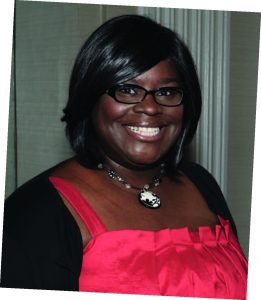


 Tom Corvo, owner of Shore Grow Hydro, a three-year-old hydro-ponics retail store in Ocean, says there are many consider-ations that determine what sort of home-growing unit to purchase: Do you have the space, time Shore Grow Hydro and budget? Generally the lights are the most expensive purchase. One customer spent $50,000 to set up two rooms with hydroponics. Or you could invest in a simpler set-up of a lettuce raft floating in a 2 x 4-foot tray on legs with a grow light for under $500. The store smartly offers support: the last Thursday in every month, Shore Grow runs classes—from Hydro 101 for seed starting and fruiting to more advanced 201 classes for propagation, pest control and the finer points of automation.
Tom Corvo, owner of Shore Grow Hydro, a three-year-old hydro-ponics retail store in Ocean, says there are many consider-ations that determine what sort of home-growing unit to purchase: Do you have the space, time Shore Grow Hydro and budget? Generally the lights are the most expensive purchase. One customer spent $50,000 to set up two rooms with hydroponics. Or you could invest in a simpler set-up of a lettuce raft floating in a 2 x 4-foot tray on legs with a grow light for under $500. The store smartly offers support: the last Thursday in every month, Shore Grow runs classes—from Hydro 101 for seed starting and fruiting to more advanced 201 classes for propagation, pest control and the finer points of automation. On the opposite coast, there’s California-based Hamama, a micro-green growing system that pops up on my Facebook feed every day. The ads of this e-commerce hydroponics company are appealing and tempting. What intrigues me is the promise of healthful microgreens that grow quickly, easily and don’t take up a lot of space or energy—as well as no need for a water pump or filter. (So technically is this hydroponic?) Better yet, the company’s “starter kit” doesn’t cost a lot of lettuce: $35 plus free shipping. Costs can mount if you go all-in and purchase a “grow shelf” that accommodates six grow trays. I spoke with Camille Richman at Hamama, who reports that orders have increased during the pandemic and that their top-seller is the Super Salad Mix Seed Quilt, a growing medium that contains broccoli, kale, arugula, kohlrabi, cabbage and cauliflower seeds. But the jury is out: Amazon customers either loved or hated the product—the seed strips worked for some and didn’t deliver salad for others.
On the opposite coast, there’s California-based Hamama, a micro-green growing system that pops up on my Facebook feed every day. The ads of this e-commerce hydroponics company are appealing and tempting. What intrigues me is the promise of healthful microgreens that grow quickly, easily and don’t take up a lot of space or energy—as well as no need for a water pump or filter. (So technically is this hydroponic?) Better yet, the company’s “starter kit” doesn’t cost a lot of lettuce: $35 plus free shipping. Costs can mount if you go all-in and purchase a “grow shelf” that accommodates six grow trays. I spoke with Camille Richman at Hamama, who reports that orders have increased during the pandemic and that their top-seller is the Super Salad Mix Seed Quilt, a growing medium that contains broccoli, kale, arugula, kohlrabi, cabbage and cauliflower seeds. But the jury is out: Amazon customers either loved or hated the product—the seed strips worked for some and didn’t deliver salad for others. By now, you may have surmised that I’m in favor of low-maintenance systems. I gravitate to easy-to-use and safe products. So I also gravitated to a hydroponics off-shoot called aeroponics. Aerofarms Aeroponics is a growing system that combines aeration and nutrient misting that encourages faster plant growth. Newark is home to Aerofarms, a “data-driven” indoor vertical growing farm and company that has been in the news the last few years. This New Jersey “home-grown” business enjoys several partnerships around the state, nationally and globally. The company, which claims its growing systems need 95% less water than outdoor farms, has been selling its lettuces, herbs and microgreens to restaurants ranging from Red Rooster to Momofuku, as well as retail grocery chains including Whole Foods under the brand Dream Greens. Aerofarms also professes to be 390 times more productive per square foot than traditional agriculture. Privately owned, the company enjoys financial partnerships with Goldman Sachs, IKEA and Dubai Holdings. Now Aerofarms is building the world’s largest aeroponic farm—90,000 square feet—in Abu Dhabi.
By now, you may have surmised that I’m in favor of low-maintenance systems. I gravitate to easy-to-use and safe products. So I also gravitated to a hydroponics off-shoot called aeroponics. Aerofarms Aeroponics is a growing system that combines aeration and nutrient misting that encourages faster plant growth. Newark is home to Aerofarms, a “data-driven” indoor vertical growing farm and company that has been in the news the last few years. This New Jersey “home-grown” business enjoys several partnerships around the state, nationally and globally. The company, which claims its growing systems need 95% less water than outdoor farms, has been selling its lettuces, herbs and microgreens to restaurants ranging from Red Rooster to Momofuku, as well as retail grocery chains including Whole Foods under the brand Dream Greens. Aerofarms also professes to be 390 times more productive per square foot than traditional agriculture. Privately owned, the company enjoys financial partnerships with Goldman Sachs, IKEA and Dubai Holdings. Now Aerofarms is building the world’s largest aeroponic farm—90,000 square feet—in Abu Dhabi.  says the vertical growing units—an outdoor one ($620) and an indoor version ($970) with LED grow-lights—are selling so well she can’t keep them in stock. While Tower Garden offers a seed starting kit for $29, a first farming foray might be better served with $2 plant seedlings. The indoor tower can house up to 16 microgreens and 16 full greens at one time. Campi says that the plants last up to three or four months and recommends harvesting lettuce from the outside. Her enterprising college-age son Joe has started a Tower Garden Cleaning and Set-up business to help her clients maintain their towers. As a multi-tasker with a half-dozen projects in the works, I don’t want to think about upkeep. So perhaps Joe’s $120 maintenance fee per season for one indoor model, though pricy, could be worth it.
says the vertical growing units—an outdoor one ($620) and an indoor version ($970) with LED grow-lights—are selling so well she can’t keep them in stock. While Tower Garden offers a seed starting kit for $29, a first farming foray might be better served with $2 plant seedlings. The indoor tower can house up to 16 microgreens and 16 full greens at one time. Campi says that the plants last up to three or four months and recommends harvesting lettuce from the outside. Her enterprising college-age son Joe has started a Tower Garden Cleaning and Set-up business to help her clients maintain their towers. As a multi-tasker with a half-dozen projects in the works, I don’t want to think about upkeep. So perhaps Joe’s $120 maintenance fee per season for one indoor model, though pricy, could be worth it. 


 1. Combine the onion and garlic in the slow cooker. Add the carrots, parsnips, turnip, potato, and rice. Stir in the tomatoes, broth, herbes de Provence, and salt and pepper to taste. Cover and cook on Low until the vegetables are tender, 6 to 8 hours.
1. Combine the onion and garlic in the slow cooker. Add the carrots, parsnips, turnip, potato, and rice. Stir in the tomatoes, broth, herbes de Provence, and salt and pepper to taste. Cover and cook on Low until the vegetables are tender, 6 to 8 hours. Holy Mole Red Bean Chili
Holy Mole Red Bean Chili

 Rustic Potpie Topped with Chive Biscuits
Rustic Potpie Topped with Chive Biscuits

 Coconut Rice Pudding
Coconut Rice Pudding



 His thumbprints are on projects ranging from a rambling rose garden in Bellingham, Washington and a rose garden and propagation program on the Frank Lloyd Wright-designed Southern Florida College campus, to a vast heritage rose collection in Chambersville, Texas and a children’s plant workshop a bit closer to home, in Harlem.
His thumbprints are on projects ranging from a rambling rose garden in Bellingham, Washington and a rose garden and propagation program on the Frank Lloyd Wright-designed Southern Florida College campus, to a vast heritage rose collection in Chambersville, Texas and a children’s plant workshop a bit closer to home, in Harlem. With the influx of genetically engineered roses, Scanniello’s approach to heritage roses is almost like a spiritual calling. “Rosarians have a responsibility to preserve species roses and their oldest known hybrids,” he explains. “Modern-day rose hybridizers are turning to these oldest roses for the key to creating healthy roses. Without the preservation of species and old roses, a valuable genetic link to disease resistance will be lost.”
With the influx of genetically engineered roses, Scanniello’s approach to heritage roses is almost like a spiritual calling. “Rosarians have a responsibility to preserve species roses and their oldest known hybrids,” he explains. “Modern-day rose hybridizers are turning to these oldest roses for the key to creating healthy roses. Without the preservation of species and old roses, a valuable genetic link to disease resistance will be lost.” The author of seven books on roses, Scanniello approaches his subject like a detective. His mission to find and preserve roses spans the world and is a bit of a race against time, as uneducated gardeners are planting newer breeds and eschewing the older roses. It is a mission that often leads him to some unexpected places. One source, for example, was discovered in East Germany, behind the former Iron Curtain. Sangerhausen Rose Garden—a time-warp, hermetically-sealed garden—had remained untouched from before World War II, offering healthy roses that had escaped the heavy-handed adulterations of modern-day hybridizers. Another fruitful, if macabre, source of heritage roses are old cemeteries. There, like ghosts surrounding old, unkempt graves, grow some of the best examples of heritage roses from another era.
The author of seven books on roses, Scanniello approaches his subject like a detective. His mission to find and preserve roses spans the world and is a bit of a race against time, as uneducated gardeners are planting newer breeds and eschewing the older roses. It is a mission that often leads him to some unexpected places. One source, for example, was discovered in East Germany, behind the former Iron Curtain. Sangerhausen Rose Garden—a time-warp, hermetically-sealed garden—had remained untouched from before World War II, offering healthy roses that had escaped the heavy-handed adulterations of modern-day hybridizers. Another fruitful, if macabre, source of heritage roses are old cemeteries. There, like ghosts surrounding old, unkempt graves, grow some of the best examples of heritage roses from another era. Starting your own heritage rose garden, Scanniello insists, is not as daunting a task as one might imagine. For starters, he recommends planting a heritage rose in a 24-inch pot or wooden barrel, placed in a location that gets plenty of sun. It should be watered either in the early morning or late afternoon, near the mid-day sun. He encourages New Jersey gardeners to plant roses hailing from New Jersey, such as a pink Jersey Beauty, which was created in South Orange, or South Orange Perfection, or New Dawn, a continually blooming genetic off-shoot of the Dr. van Fleet rose. Other good strains of roses that will bloom continually are the Parade or Dream Girl, bred by Martin Jacobus in Ridgefield in the 1950s and ’60s.
Starting your own heritage rose garden, Scanniello insists, is not as daunting a task as one might imagine. For starters, he recommends planting a heritage rose in a 24-inch pot or wooden barrel, placed in a location that gets plenty of sun. It should be watered either in the early morning or late afternoon, near the mid-day sun. He encourages New Jersey gardeners to plant roses hailing from New Jersey, such as a pink Jersey Beauty, which was created in South Orange, or South Orange Perfection, or New Dawn, a continually blooming genetic off-shoot of the Dr. van Fleet rose. Other good strains of roses that will bloom continually are the Parade or Dream Girl, bred by Martin Jacobus in Ridgefield in the 1950s and ’60s.
 Alan Richman, restaurant critic for GQ magazine, dean of food journalism and new media at the International Culinary Center in New York, author of the acclaimed book Fork It Over as well as thousands of newspaper and magazine articles, and recipient of the Bronze Star in the Vietnam War, is having lunch at Martino’s Cuban Restaurant on West Main Street in Somerville. It is a hot summer day.
Alan Richman, restaurant critic for GQ magazine, dean of food journalism and new media at the International Culinary Center in New York, author of the acclaimed book Fork It Over as well as thousands of newspaper and magazine articles, and recipient of the Bronze Star in the Vietnam War, is having lunch at Martino’s Cuban Restaurant on West Main Street in Somerville. It is a hot summer day. His grandparents, Rose and Nathan Rabinowitz, belonged to the Orthodox temple in Somerville, where young Richman “sat through services in 107-degree heat.” Though his grandmother “wasn’t a very good cook,” she did make a “fine kuchin.”
His grandparents, Rose and Nathan Rabinowitz, belonged to the Orthodox temple in Somerville, where young Richman “sat through services in 107-degree heat.” Though his grandmother “wasn’t a very good cook,” she did make a “fine kuchin.”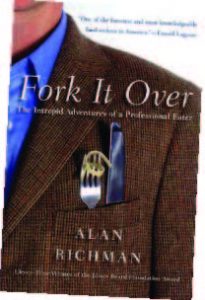 FOR FUTURE REFERENCE
FOR FUTURE REFERENCE
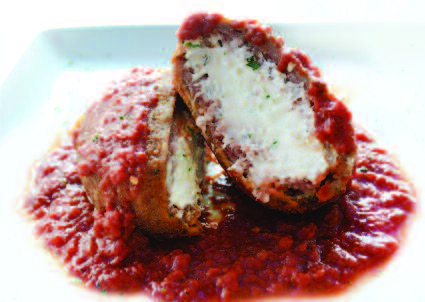 Café Z • Stuffed Meatball
Café Z • Stuffed Meatball Chestnut Chateau • Pan-Seared Tilefish
Chestnut Chateau • Pan-Seared Tilefish George and Martha’s American Grille • Pork Osso Buco
George and Martha’s American Grille • Pork Osso Buco The Manor • Surf & Turf
The Manor • Surf & Turf Mario’s Tutto Bene • Vinegar Pork Chops
Mario’s Tutto Bene • Vinegar Pork Chops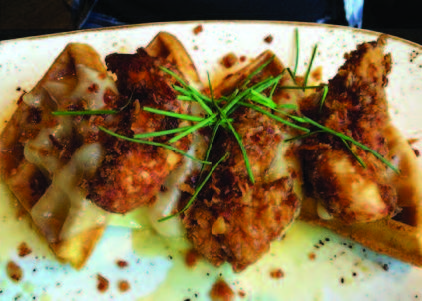 The Office Tavern Grill • Chicken & Waffles
The Office Tavern Grill • Chicken & Waffles The Office Beer Bar & Grill • The Wedge Burger
The Office Beer Bar & Grill • The Wedge Burger Piattino Neighborhood Bistro • Braised Chicken & Linguine
Piattino Neighborhood Bistro • Braised Chicken & Linguine Publick House • Blackened Scottish Salmon
Publick House • Blackened Scottish Salmon Rio Rodizio • Roasted Meats
Rio Rodizio • Roasted Meats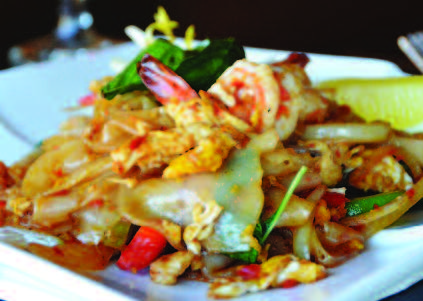 Thai Amarin • Drunken Noodles
Thai Amarin • Drunken Noodles
 There is a rule of thumb in the restaurant business: Try to be everything to all people, and the best you’ll be is Applebee’s. The worst you’ll be is out of business. That being said, Rella’s Italian Tavern proves you can serve two masters, both literally and figuratively. The restaurant’s menu offers two ways to go (as its name implies), imaginative Italian cuisine or reliable tavern fare. Co-owner Sal Chiarella knows his way around both kitchens. He created and sold both the neighborhood go-to spot Harborside Grill in Atlantic Highlands and Fratello’s, a high-end Italian eatery in Sea Girt. Both are still going strong.
There is a rule of thumb in the restaurant business: Try to be everything to all people, and the best you’ll be is Applebee’s. The worst you’ll be is out of business. That being said, Rella’s Italian Tavern proves you can serve two masters, both literally and figuratively. The restaurant’s menu offers two ways to go (as its name implies), imaginative Italian cuisine or reliable tavern fare. Co-owner Sal Chiarella knows his way around both kitchens. He created and sold both the neighborhood go-to spot Harborside Grill in Atlantic Highlands and Fratello’s, a high-end Italian eatery in Sea Girt. Both are still going strong. ON THE TAVERN SIDE
ON THE TAVERN SIDE
 FIT FOR A KING
FIT FOR A KING LINE ITEM
LINE ITEM ALL THAT GLITTERS
ALL THAT GLITTERS PETAL TO THE METAL
PETAL TO THE METAL NUMBERS GAME
NUMBERS GAME FAIR & SQUARE
FAIR & SQUARE ENDLESS LOVE
ENDLESS LOVE SPRING FEVER
SPRING FEVER GOLD FINGER
GOLD FINGER SIMPLY BRILLIANT
SIMPLY BRILLIANT FUTURE PERFECT
FUTURE PERFECT TRUE COLORS
TRUE COLORS MAKE IT COUNT
MAKE IT COUNT PURPLE PASSION
PURPLE PASSION NET GAINS
NET GAINS CRAZY 8’S
CRAZY 8’S SWING TIME
SWING TIME









 Lewis & Clark College • Oregon
Lewis & Clark College • Oregon
 Georgian Court University • New Jersey 5
Georgian Court University • New Jersey 5
 ALL IN THE FAMILY
ALL IN THE FAMILY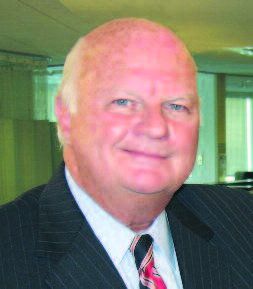 POWER PLAYER
POWER PLAYER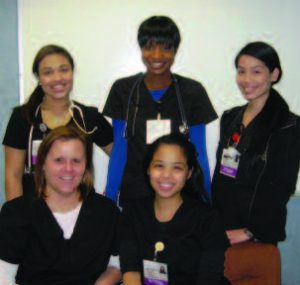 DESIGNED FOR NURSES
DESIGNED FOR NURSES COLON HEALTH… FROM A TO Z
COLON HEALTH… FROM A TO Z A LOOK INSIDE TRINITAS
A LOOK INSIDE TRINITAS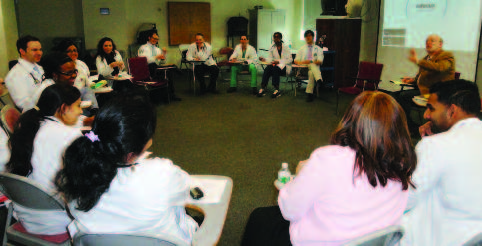 BEYOND MEDICINE
BEYOND MEDICINE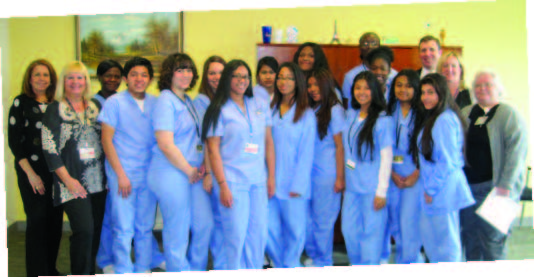 SHADOWING GETS AN A+
SHADOWING GETS AN A+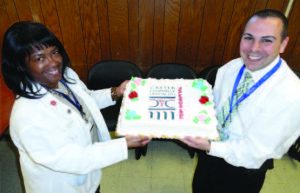






 They Do More Than Play Football at LSU
They Do More Than Play Football at LSU The Five-Second Rule: A Second Look
The Five-Second Rule: A Second Look Surprising Findings in Oral Cancer Study
Surprising Findings in Oral Cancer Study
 Home Games
Home Games
 Number One Not So Fun
Number One Not So Fun

 “Almost all urologists agree that PSA testing benefits far more people than it hurts,” says Andrew Bernstein, MD, adding that the AUA and USPSTF will eventually meet somewhere in the middle. “It is just a blood test. Doctors and patients together make the decision on what to do about the results. In years prior, it was a reflex to proceed with further biopsy work, surgery, or aggressive treatment. We know that is not necessarily mandatory now, but the cost of a blood test is far less than the cost of treating a disease after it has spread.”
“Almost all urologists agree that PSA testing benefits far more people than it hurts,” says Andrew Bernstein, MD, adding that the AUA and USPSTF will eventually meet somewhere in the middle. “It is just a blood test. Doctors and patients together make the decision on what to do about the results. In years prior, it was a reflex to proceed with further biopsy work, surgery, or aggressive treatment. We know that is not necessarily mandatory now, but the cost of a blood test is far less than the cost of treating a disease after it has spread.”
 The Center features state of the art operating rooms offering comprehensive outpatient surgical procedures including plastic surgery, laparoscopic gynecological procedures, gallbladder surgery, hernia repair, orthopedic, vascular, podiatric, and pain management surgeries as well as cutting edge hemorrhoid surgery. Andrea Zimmern, MD, Colorectal Surgeon at Trinitas, is the first surgeon in Union County to carry out Transanal Hemorrhoidal Dearterialization (THD) procedures at the Center. “The groundbreaking THD procedure is virtually painless,” Dr. Zimmern says. “We tie off all the blood vessels that feed the hemorrhoid, and work in an area of the anal canal that has no pain sensory innervation. It’s a drastic, positive change from traditional surgery—patients are back to normal activities usually in less than a week. THD changes the game because we’ve removed the painful discomfort while minimizing recovery time. That’s an amazing advancement when you consider what hemorrhoid surgery used to mean.”
The Center features state of the art operating rooms offering comprehensive outpatient surgical procedures including plastic surgery, laparoscopic gynecological procedures, gallbladder surgery, hernia repair, orthopedic, vascular, podiatric, and pain management surgeries as well as cutting edge hemorrhoid surgery. Andrea Zimmern, MD, Colorectal Surgeon at Trinitas, is the first surgeon in Union County to carry out Transanal Hemorrhoidal Dearterialization (THD) procedures at the Center. “The groundbreaking THD procedure is virtually painless,” Dr. Zimmern says. “We tie off all the blood vessels that feed the hemorrhoid, and work in an area of the anal canal that has no pain sensory innervation. It’s a drastic, positive change from traditional surgery—patients are back to normal activities usually in less than a week. THD changes the game because we’ve removed the painful discomfort while minimizing recovery time. That’s an amazing advancement when you consider what hemorrhoid surgery used to mean.” The Center opened for business in March and will help Trinitas handle a growing demand for same-day surgery. From 2012 to 2013, the hospital experienced a rise of more than 15 percent in these types of procedures, and expects 10 to 15 percent growth in this category to remain steady for several years. About 45 percent of the surgeries performed at Trinitas are already of the outpatient variety.
The Center opened for business in March and will help Trinitas handle a growing demand for same-day surgery. From 2012 to 2013, the hospital experienced a rise of more than 15 percent in these types of procedures, and expects 10 to 15 percent growth in this category to remain steady for several years. About 45 percent of the surgeries performed at Trinitas are already of the outpatient variety.